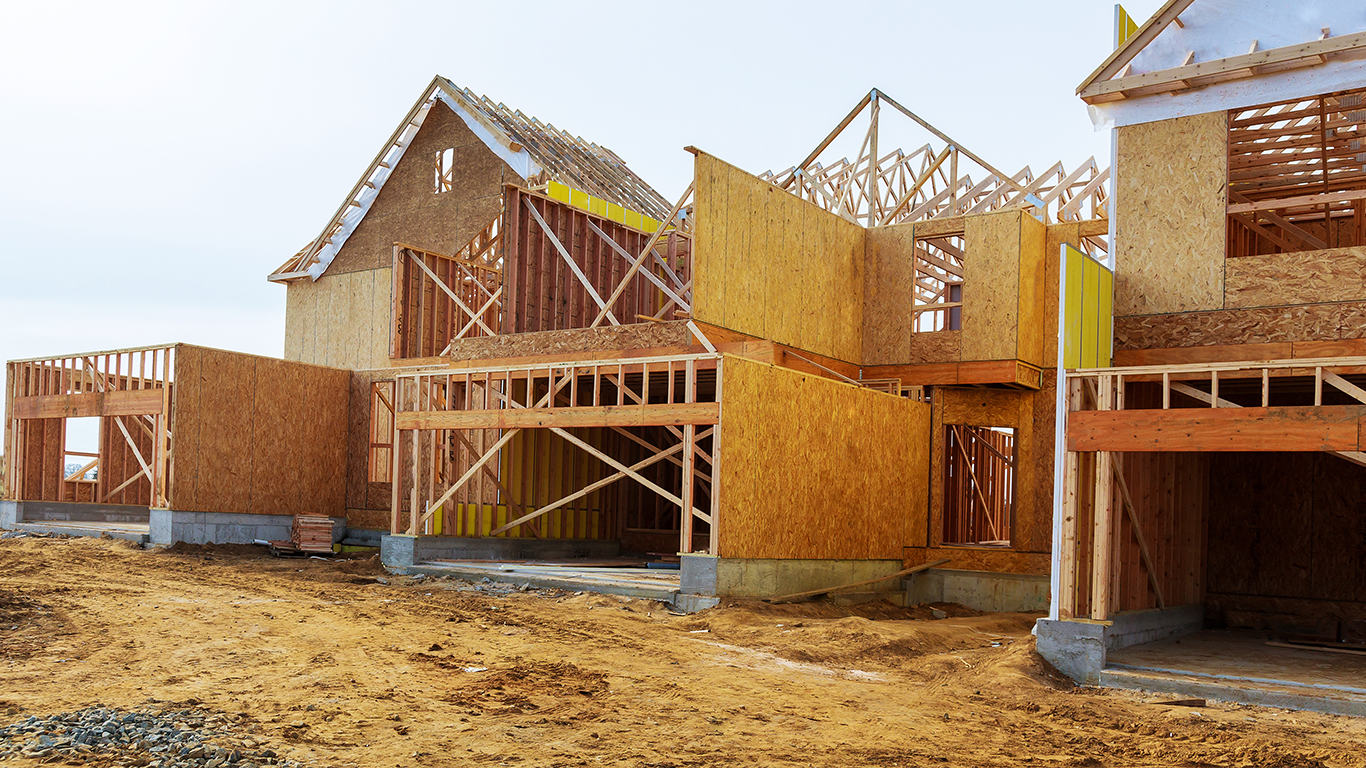
Following a strong performance in 2017, U.S. homebuilders have had a disappointing first nine months of 2018. Looking at a group of seven stocks, the best performer of the bunch so far this year is down nearly 16%.
The decline flies in the face of strong demand and relatively good sales. The problems have been rising materials and labor costs. Lumber imported from Canada is more expensive and even nails are more expensive now that the Trump tariff on imported goods has forced the closure of the only nail-making plant in the United States. Labor shortages mean builders have to pay more to attract workers. While some costs have been passed along to buyers, builders still have to compete with one other, so the price increases have been moderate.
Rising interest rates have also been a headwind. Mortgage interest rates on a 30-year fixed-rate conforming loan have reached a seven-year high and are almost certain to top 5% by the end of the year.
To top it all off, builders have focused their construction on more expensive homes. A two-story house with 3,200 square feet does not cost twice as much to build as a single-story, 1,600-square foot house, and the builder earns a higher profit on the larger home.
Home buyers pay a lot of attention to monthly payments. The goal for many is home ownership, getting started on accumulating some equity in the place they’re living in instead of just enriching some landlord. If interest rates and homebuilding costs for 3,200 square-foot homes is rising and keeping the home they want out of safe reach, they could be satisfied with a 1,600 square-foot home they can afford and wait a few years to buy that big house they’ve always wanted.
Among publicly traded homebuilders, BTIG analyst Carl Reichardt told MarketWatch, that the current market sweet spot for builders is the “super-affordable” segment, roughly $100,000 below the current national median home price of $328,700. More generally, super-affordable houses are those in the bottom quartile of new homes for sale in a particular county. In this morning’s report on August new home sales, the U.S. Census Bureau noted that 45% of the month’s sales were made on houses valued below $300,000.
Reichardt also suggests four builders that have the edge in that market: D.R. Horton Inc. (NYSE: DHI). LGI Homes Inc. (NASDAQ: LGIH), NVR Inc. (NYSE: NVR) and Meritage Homes Corp. (NYSE: MTH). Below is a quick summary of each, along with a look at three larger (by market cap) builders: Lennar Corp. (NYSE: LEN), Toll Brothers Inc. (NYSE: TOL) and PulteGroup Inc. (NYSE: PHM).
All have low price-to-earnings (P/E) ratios and trade well below forward price targets. Still, the headwinds noted earlier can raise volatility in these shares. Are homebuilders a value or a value trap?
D.R. Horton, with a market cap of around $15.9 billion, is the largest of the publicly traded builders. For the year to date in 2018, the company’s stock is down 15.8%, and it’s the best performer of the bunch. The stock’s 52-week range is $37.33 to $53.32, and at noon Wednesday it was trading down about 1.7% at $42.27. The forward P/E ratio is 9.24, and the consensus price target is $53.39.
Lennar is the second-largest homebuilder, with a market cap of around $15.4 billion. In 2018, the stock has dropped 22.7%, and it traded at around $47.89 Wednesday, down about 2.1%, in a 52-week range of $47.87 to $72.17. The low was posted earlier this morning. Lennar’s forward P/E ratio is 7.06, and the consensus price target is $69.82.
NVR sports a market cap of around $9.15 billion. Shares are down 27.1% to date in 2018. The company’s 52-week price range is $2,520.70 (a new low set today) to $3,700.00, and shares traded at $2,524.04 (down 1.3%) at noon Wednesday. The stock’s forward P/E is 11.94, and the price target is $3,693.33.
PulteGroup’s market cap is $7.2 billion, and the company’s share price has tumbled 22.1% to date in 2018. The stock’s 52-week range is $25.22 to $35.21, and shares traded last at $25.35, down 2.1% for the day. The low was also posted this morning. The company’s forward P/E ratio is 6.72, and the price target is $33.47.
The Toll Brothers market cap is around $5.2 billion, and the company’s year-to-date share price loss is 26.6%. The 52-week range on the stock is $33.47 to $52.73, and shares traded down about 2% in the noon hour at $34.52. The forward P/E ratio is 6.86, and the stock’s price target is $47.79.
Meritage has a market cap of $1.69 billion, and it traded down about 1.42% Wednesday at $41.55, in a 52-week range of $40.60 to $55.50. The forward P/E ratio is 7.12. The consensus price target is $52.89. Shares have lost 17.7% so far in 2018.
LGI Homes owns the smallest market cap of any of this group at just $1.1 billion, as well as the poorest year-to-date performance of any of these stocks — down 33%. The stock traded down about 2.5% in the noon hour Wednesday, at $49.00 in a 52-week range of $45.12 to $81.88. The forward P/E is 6.53, and the consensus price target is $70.50.
Thank you for reading! Have some feedback for us?
Contact the 24/7 Wall St. editorial team.
